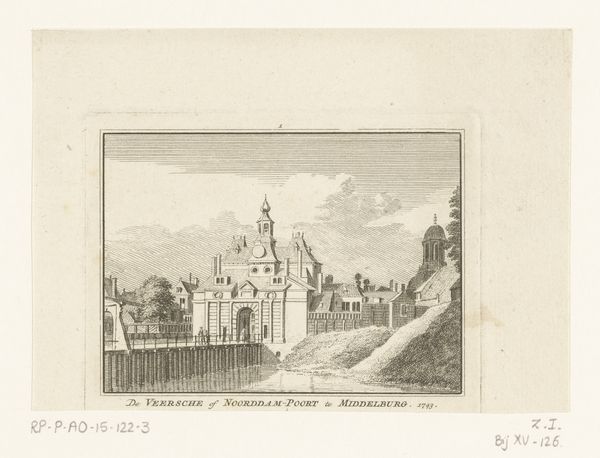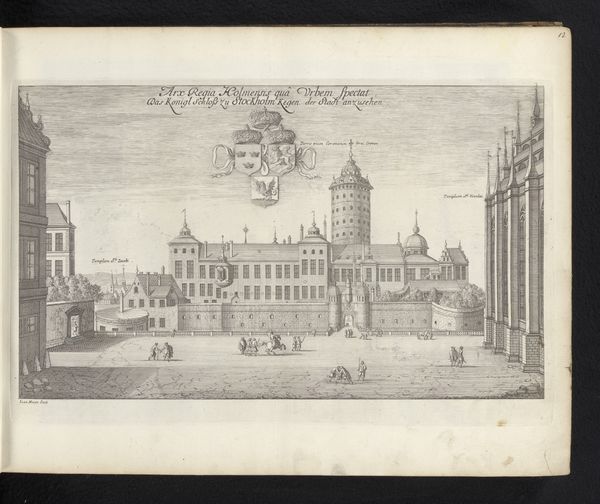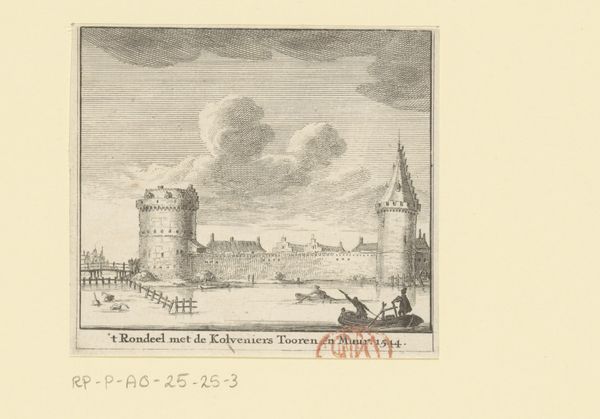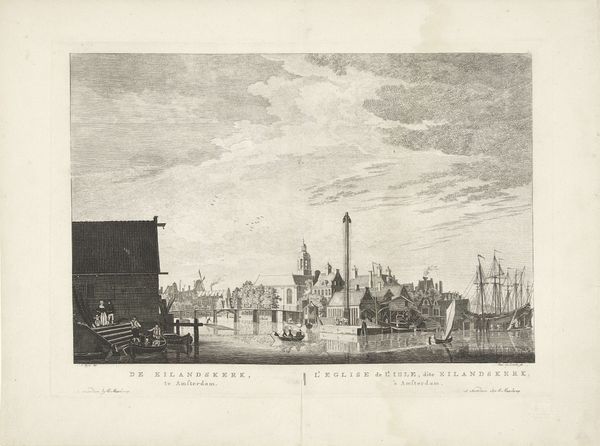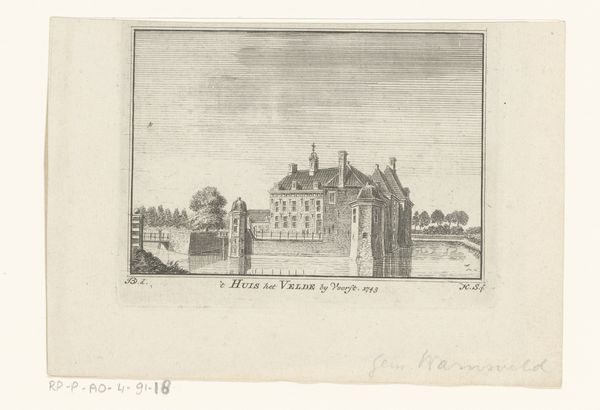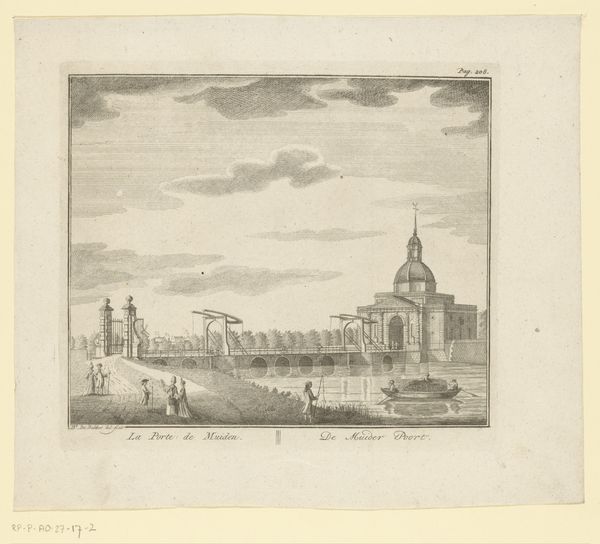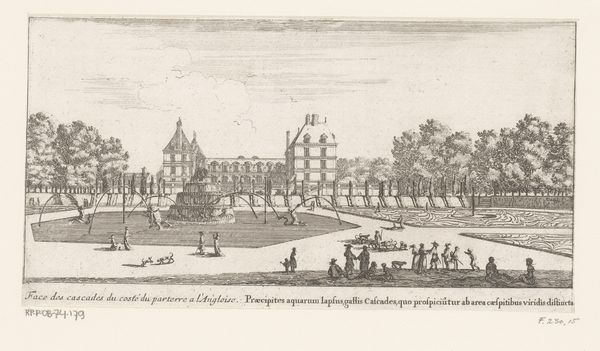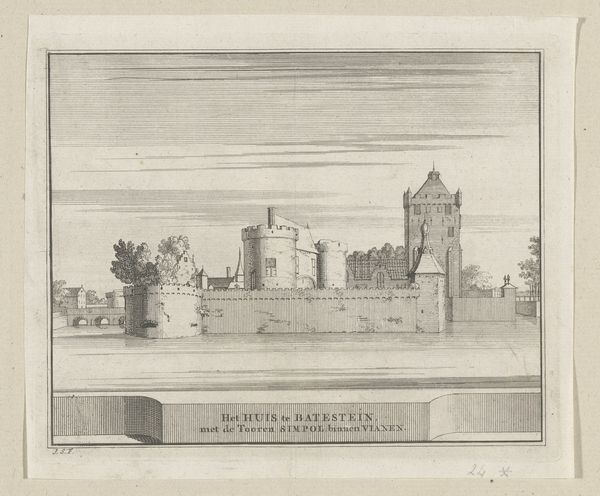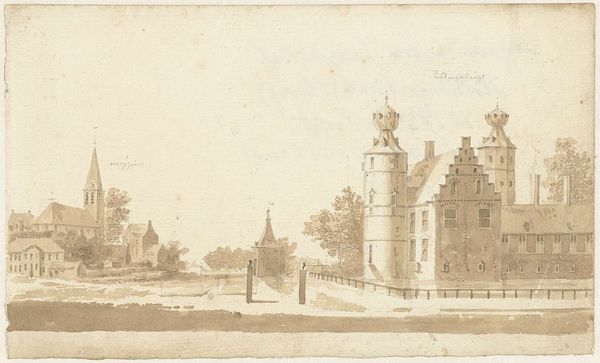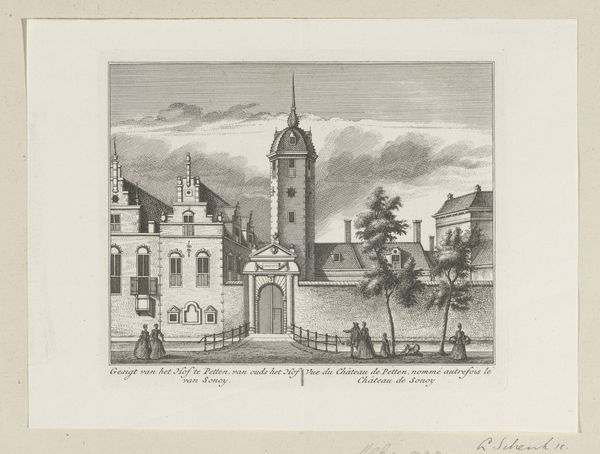
Dimensions: height 83 mm, width 107 mm
Copyright: Rijks Museum: Open Domain
Curator: It strikes me as quite imposing, actually. This etching, titled "Gezicht op Huis Bergh," presents a very ordered vision, wouldn't you say? Editor: Certainly, there’s a sense of solidity to it. Hendrik Spilman made this print sometime between 1745 and 1792, and what stands out for me is its feeling of self-contained power. It's literally surrounded by water. Curator: Water, in iconography, is fascinating. Here, the moat suggests the separation of the castle’s inhabitants from the outside world, hinting at introspection, reflection…or even isolation. Do you feel that the visual structure echoes broader political dynamics? Editor: I do. We're seeing this work at the Rijksmuseum, in the context of Dutch history, and during this period the Dutch Republic was in decline, struggling with internal divisions and external pressures. That fortress mentality—literally embodied in the building’s architecture—reflected a wider cultural mood. Curator: That fortress metaphor, as you call it, really extends, even to the very fine etching lines. The artist isn’t giving us many emotional cues in the sky. It seems symbolic of holding oneself together under pressure, that almost scientific, mapped feeling to it. It’s not exactly cold, but… reserved. Editor: Right, the Baroque landscape style itself can be seen as a symbol. There's a deliberate ordering of nature, with that perfectly still water acting as a mirror to power. In many ways, the art's politics reflects the values of the patrons and wider political class, but, conversely, its survival into our age suggests it continues to resonate. Curator: I wonder, too, how viewers then might have seen it. The print format meant that it could circulate easily; what kind of symbolic work did that image of steadfastness perform on a wider scale? And do we unconsciously relate to those feelings of needing to be on guard even now? Editor: Exactly. So it encourages reflection both about the image’s historic moment and about its afterlife. How, and why, does an image like this stay with us? Curator: It certainly has given me a lot to consider; how it's less just a building, and more like a visual declaration. Editor: Agreed, seeing it as part of this conversation is far more intriguing now.
Comments
No comments
Be the first to comment and join the conversation on the ultimate creative platform.
